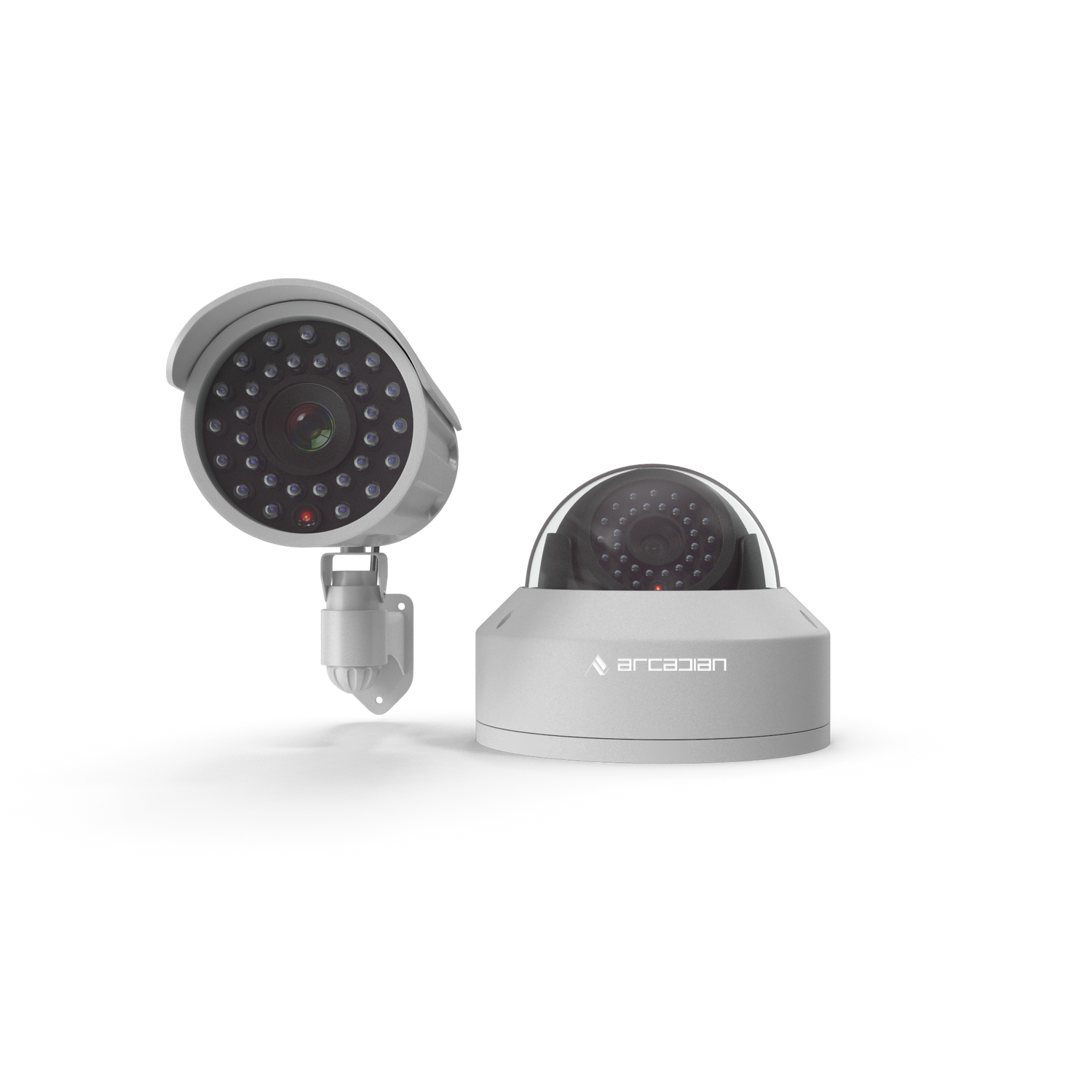Introduction: Is Your NVR System Holding You Back?
Businesses today need security systems that are efficient, flexible, and future-ready. While NVR systems (Network Video Recorders) have been the standard for years, they come with limitations that can stunt your security strategy and cost you more over time.
Cloud security cameras are changing the game, offering features that NVR systems simply can’t match. From AI-powered analytics to cost efficiency and real-time accessibility, cloud solutions deliver benefits that modern businesses need to stay protected and competitive.
In this blog, we explore the top 7 features of cloud security cameras that NVR systems can’t replicate—and why they’re essential for your business’s security and growth.
1. No On-Site Hardware or Storage Needed
The NVR Problem:
NVR systems rely on physical hardware like recorders and hard drives to store footage on-site. This:
- Creates high upfront costs for equipment and storage.
- Requires regular maintenance to replace failing hard drives or outdated software.
- Exposes businesses to risks of data loss from theft, fire, or hardware failure.
The Cloud Advantage:
-
Eliminates Hardware Costs: Footage is stored securely in the cloud, reducing the need for expensive recorders.
-
Automatic Data Backup: Cloud systems provide redundant storage across secure data centers, ensuring no footage is ever lost.
-
Low Maintenance: Updates happen automatically, saving IT time and reducing downtime.
Stat: Businesses save up to 40% annually in maintenance costs by switching to cloud-based systems (Source: Deloitte).
2. Unlimited Scalability
The NVR Problem:
- NVR systems have capacity limits. Adding more cameras often requires replacing the recorder or upgrading storage drives.
- Expanding security for multi-site or growing businesses can quickly become costly and complex.
The Cloud Advantage:
-
Scalable On Demand: Easily add or remove cameras without hardware upgrades.
-
Multi-Site Management: Monitor multiple locations from a single dashboard, regardless of size.
-
Flexible Pricing: Pay only for the cameras and storage you need, keeping costs manageable.
Example:
A retail chain with 15 stores scaled their cloud security system across all locations seamlessly without spending thousands on hardware upgrades.
3. Remote Access from Anywhere, Anytime
The NVR Problem:
NVR systems require you to be physically on-site or connected to the local network to access footage. Remote viewing can be clunky and often requires additional software or VPN setups.
The Cloud Advantage:
-
24/7 Remote Access: View live feeds and recorded footage from any device—smartphone, tablet, or computer—anywhere in the world.
-
Real-Time Alerts: Receive instant notifications for suspicious activity, improving response times.
-
Secure Logins: Use encrypted access credentials to ensure footage stays private.
Stat: Businesses with cloud systems improve incident response times by up to 30% due to remote access capabilities (Source: Forrester).
4. Built-In AI and Advanced Analytics
The NVR Problem:
Traditional NVR systems only record and store footage. Advanced features like motion detection, facial recognition, or heat mapping require costly third-party software and hardware.
The Cloud Advantage:
Cloud systems come with AI-powered analytics built-in:
-
Motion Detection: Detect unusual activity and receive real-time alerts.
-
Facial Recognition: Identify repeat offenders or unauthorized personnel.
-
Heat Mapping: Analyze traffic patterns to optimize layouts and identify high-risk areas.
-
Smart Search: Quickly locate specific events without sifting through hours of footage.
Example:
A retail store reduced shrinkage by 35% using cloud cameras with built-in AI tools to monitor shoplifting hotspots.
5. Enhanced Data Security with Cloud Encryption
The NVR Problem:
- On-site storage is vulnerable to physical theft, tampering, or environmental damage.
- NVR systems often lack modern cybersecurity measures, making them easy targets for hacking.
The Cloud Advantage:
-
End-to-End Encryption: Video data is encrypted during transmission and storage, ensuring it remains secure.
-
Data Redundancy: Footage is backed up across multiple cloud servers, protecting it from local failures.
-
Compliance Ready: Cloud providers ensure data security aligns with standards like GDPR, HIPAA, and PCI DSS.
Stat: Businesses with cloud-based security systems experience 50% fewer data breaches compared to those relying on local NVR systems (Source: Ponemon Institute).
6. Real-Time Alerts and Automated Responses
The NVR Problem:
NVR systems require manual monitoring or review of footage, which is time-consuming and prone to human error. Critical incidents can go unnoticed until it’s too late.
The Cloud Advantage:
-
Instant Notifications: Cloud systems send real-time alerts for motion, unauthorized access, or security breaches.
-
Automated Workflows: Trigger actions like lockdowns, alarms, or notifications to law enforcement.
-
Event Tagging: Automatically highlight and tag suspicious activity for quick review.
Example:
A warehouse received instant alerts when unauthorized personnel entered restricted zones, preventing a theft attempt in real time.
7. Cost Savings Over Time
The NVR Problem:
While NVR systems appear cheaper upfront, the long-term costs add up:
-
Hardware Upgrades: Every 3–5 years, you’ll need to replace failing NVRs and storage devices.
-
Maintenance: IT support, software updates, and troubleshooting can cost thousands annually.
-
Scaling Costs: Adding cameras requires significant hardware investments.
The Cloud Advantage:
-
Predictable Costs: Monthly subscription plans offer a predictable expense with no hidden fees.
-
No Maintenance Costs: Automatic updates and cloud storage eliminate maintenance expenses.
-
Improved ROI: The flexibility, scalability, and advanced tools offered by cloud systems provide better long-term returns.
Example Calculation:
Over 5 years, a 10-camera NVR system can cost $25,000+ when factoring in hardware, upgrades, and maintenance.
A cloud-based system costs as little as $200/month, totaling $12,000 over 5 years—saving businesses over $13,000.
Comparison Table: NVR Systems vs. Cloud Security Cameras
| Feature |
NVR Systems |
Cloud Security Cameras |
| Upfront Costs |
High (hardware, installation) |
Low or none |
| Maintenance |
Frequent and costly |
Included in subscription |
| Scalability |
Limited by hardware capacity |
Unlimited and flexible |
| Remote Access |
Limited, local-only |
24/7 access from anywhere |
| Advanced Features |
Requires additional tools |
Built-in AI and analytics |
| Data Security |
Vulnerable to local damage |
Encrypted, redundant cloud storage |
| Total Cost Over 5 Years |
$25,000+ |
$12,000 (based on $200/month) |
Conclusion: Cloud Cameras Win the Security Battle
While NVR systems may feel familiar, they’re quickly becoming outdated, expensive, and inefficient. Cloud security cameras offer features that NVR systems can’t match: AI-powered analytics, real-time alerts, remote access, scalability, and long-term cost savings.
Businesses that adopt cloud surveillance enjoy better security, lower costs, and the flexibility to grow without limits.
Ready to upgrade your security and save money?
👉 Contact Arcadian.ai today to explore how our cloud-based security solutions can transform your business.
Visit Us on Social Media
💼 LinkedIn
🌐 Facebook
📸 Instagram
🎥 YouTube
🎬 TikTok
🐦 X









